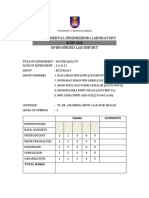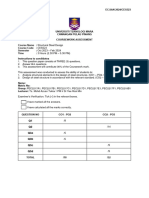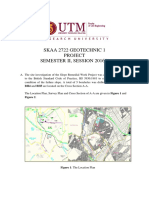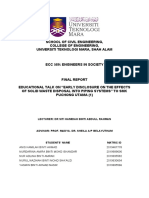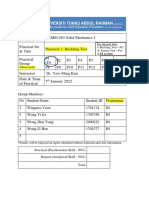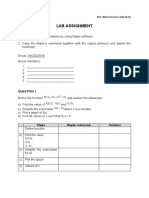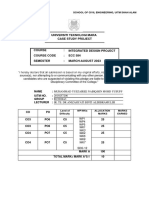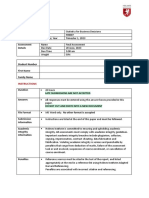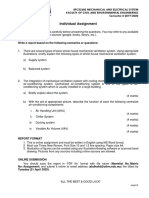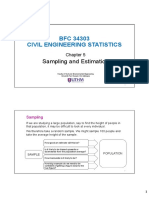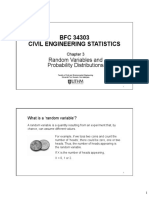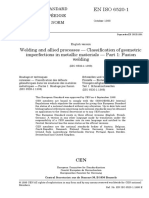0% found this document useful (0 votes)
629 views25 pagesFull Report
This document discusses a group project for a Civil Engineering Statistics class. The group was assigned to analyze data on passenger arrivals at a bus stop to study bus services. They collected data during three peak times and will use formulas to calculate statistics and analyze the data. Their methodology section describes how they will collect data, calculate measures of central tendency, variance, and quartiles. They will also create stem-and-leaf diagrams and box plots to present the data. The document provides examples of how the data will be displayed in tables for each time period studied.
Uploaded by
Muhammad Asyraf Bin RusliCopyright
© © All Rights Reserved
We take content rights seriously. If you suspect this is your content, claim it here.
Available Formats
Download as DOCX, PDF, TXT or read online on Scribd
0% found this document useful (0 votes)
629 views25 pagesFull Report
This document discusses a group project for a Civil Engineering Statistics class. The group was assigned to analyze data on passenger arrivals at a bus stop to study bus services. They collected data during three peak times and will use formulas to calculate statistics and analyze the data. Their methodology section describes how they will collect data, calculate measures of central tendency, variance, and quartiles. They will also create stem-and-leaf diagrams and box plots to present the data. The document provides examples of how the data will be displayed in tables for each time period studied.
Uploaded by
Muhammad Asyraf Bin RusliCopyright
© © All Rights Reserved
We take content rights seriously. If you suspect this is your content, claim it here.
Available Formats
Download as DOCX, PDF, TXT or read online on Scribd
/ 25



